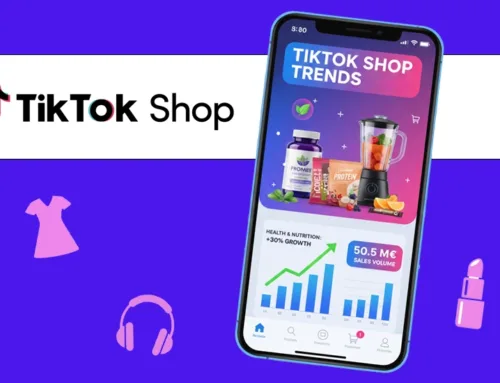Affiliation is a key lever in digital marketing. First introduced in the early 2000s, this strategy has contributed to the boom in e-commerce by introducing a performance-based model. But beyond its apparent simplicity – “you bring me a customer, I pay you” – affiliation is a well-oiled mechanism based on a tripartite relationship between advertisers, publishers and specialized platforms. It meets multiple objectives: sales, lead acquisition, visibility… and is equally suited to major brands, SMEs and content creators. Effinity, the French affiliate marketing platform, explains why.
A simple definition: web-based business development
Affiliation can be defined as a form of commercial partnership between an advertiser (often an e-commerce site) and one or more affiliate partners (blogs, comparison sites, influencers, media, etc.). The aim? To promote the advertiser’s products or services in exchange for a commission on the sales or actions generated.
This model is based on performance. Unlike traditional advertising, where remuneration is linked to display or click-through, affiliation rewards concrete results: sales made, forms filled in, newsletter subscriptions, requests for quotes, and so on.
Here’s a concrete example: a gardening blog inserts a link to a lawnmower sold on a retail website. If someone clicks on the link and buys the lawnmower, the blogger receives a commission on the sale.
The three key players in affiliate marketing
To understand how affiliation works, it is essential to understand the role of the three main players:
1. The advertiser (or affiliate)
This is the company that wants to sell its products or services. It sets up an affiliate program to recruit partners and boost sales, without taking any unnecessary financial risk, since remuneration only kicks in when performance is achieved. To get started, read our article on how to get started with affiliation.
2. The affiliate (or publisher)
This is the site, blog, influencer, comparator or media that will promote the advertiser’s offers via tracked links, banners, newsletters or editorial content. The affiliate chooses the programs that correspond to its theme and audience.
3. The affiliation platform
It plays a central role as a trusted third party. The platform hosts hundreds of programs, ensures tracking conversions, manages affiliate remuneration, provides the necessary marketing tools and facilitates exchanges between the two parties.
A win-win partnership
Affiliation is above all a strategic partnership between brands and publishers. For this partnership to be effective, the advertiser must choose affiliates that match its business sector, marketing objectives and the quality of the traffic they generate.
Two criteria are generally taken into account:
- Volume: number of visitors, click-through rate, visibility on search engines or social networks.
- Relevance: the match between the affiliate’s content and the products promoted (for example, a site specializing in parenting to promote diapers or toys).
Performance-based remuneration
The strength of affiliation lies in its remuneration model. The most common are :
- CPL (Cost per Lead): remuneration for each qualified contact generated (form filled in, registration, etc.).
- CPA (Cost per Share or Purchase): commission paid on each sale.
- CPC (Cost per Click): rarer, used in certain specific cases.
- CPM (Cost per Thousand impressions): pay per display, less used in affiliation, except in branding campaigns.
The strategic role of the affiliate platform
Affiliate marketing platforms don’t just act as intermediaries. They offer a complete ecosystem to facilitate, structure and manage campaigns:
- Access to a vast network of qualified affiliates.
- Dashboards, real-time statistics and performance reports.
- Powerful tracking tools to attribute each conversion to the affiliate who generated it.
- Campaign animation with advice, affiliate challenges, newsletters and ongoing optimization.
Their role is also human: they accompany advertisers and publishers, manage any disputes, negotiate placements, coordinate campaign objectives. In short, they orchestrate performance.
Affiliate marketing isn’t just about selling
While affiliate marketing has historically been linked to online sales, it can now be adapted to broader objectives:
- Lead collection: contact form, newsletter subscription.
- Download application or ebook.
- Booking appointments (particularly in the health, insurance and real estate sectors).
- Brand visibility: some programs focus on brand awareness, with sponsored content or special operations.
This diversity enables all types of players, including BtoB companies, to use affiliation as part of their acquisition strategy.
What are the levers used in affiliate marketing?
Affiliates use a wide range of marketing levers, depending on their audience and campaign objectives:
- Content sites (blogs, online magazines): they write articles, comparisons and buying guides.
- Cashback and discount vouchers: widely used by consumers, these sites attract large volumes of business.
- Emailing: some affiliates have qualified databases for targeted campaigns.
- Influencers: very active on Instagram, TikTok Shop or YouTube, they recommend products with a tracked link.
- Niche sites: experts in a particular field (sports, DIY, finance…), they bring in highly qualified traffic.
The benefits of affiliate marketing
Affiliate marketing offers many advantages for brands and affiliates alike:
For advertisers :
- Budget control: you only pay for results.
- Access to new acquisition channels without heavy advertising investment.
- Increased visibility in targeted communities.
- Measurable ROI with tracking.
For publishers :
- Simple, sustainable audience monetization.
- Editorial freedom: they choose programs and formats.
- Diversification of income by combining several partnerships.
Affiliate marketing in 2025: what are the trends?
Affiliate marketing evolves with usage and technology. In 2025, several trends will shape the sector:
-
- The rise of mobile: more and more affiliates are using apps or tracked links in mobile environments.
- Performance-based influence: brands demand concrete results from content creators.
- Campaign automation via AI: segmentation, product recommendations, personalization.
- Reinforcement of tracking cookieless to adapt to the end of third-party cookies.
Affiliate marketing is much more than just an online sales channel. It’s a powerful, flexible and scalable ecosystem based on a win-win logic. Brands can extend their reach, win new customers and control their return on investment. Affiliates, meanwhile, benefit from a proven monetization model to enhance the value of their audience. In short, affiliation is a pillar of modern digital marketing… and a lever for the future.
Mis à jour le 30 April 2025
Mis à jour le 30 April 2025




